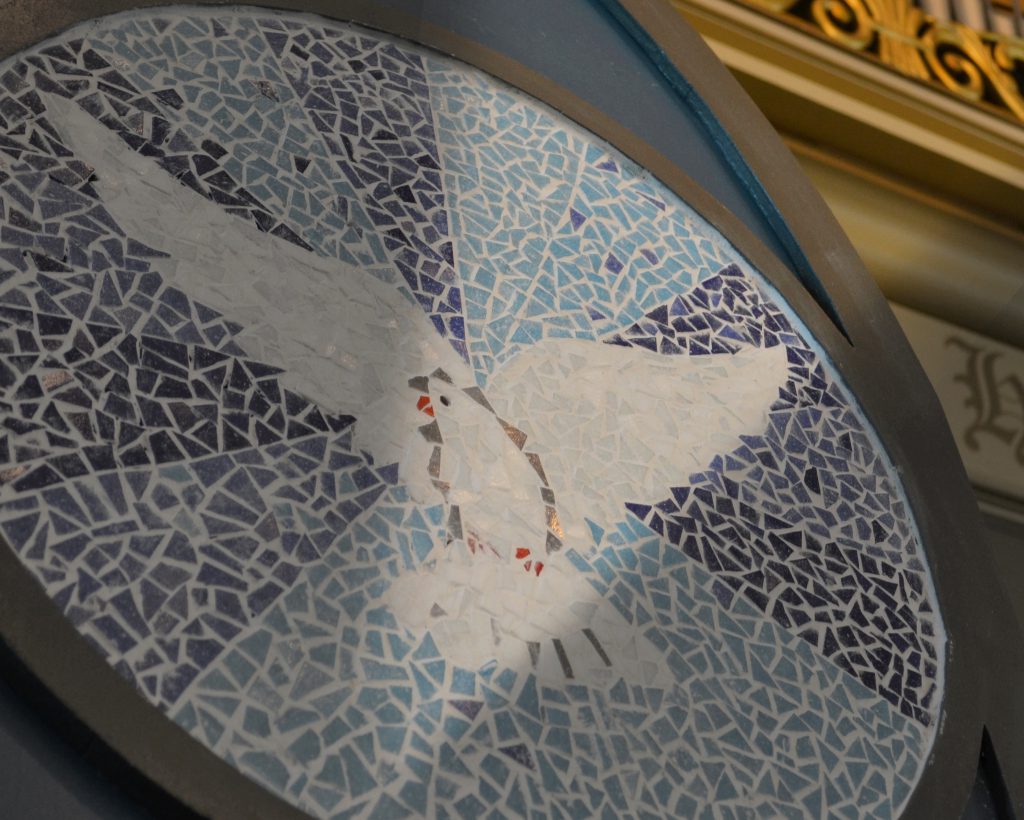Lesson 7: Listening prayer

I’m happy you’re still following along, hopefully with a lasting desire in your heart to grow in prayer and in learning to experience God’s presence. In this seventh lesson we continue to uncover the meaning of lectio divina. Let’s talk about the third step: praying (oratio).
Addition: Preface of the booklet on prayer I wrote
Addition: Standing on your red dot
7.1 The third step: praying
In this step, the reflection turns into a dialogue. Scripture becomes prayer. You are no longer thinking about the meaning of the words nor trying to sense their value for you personally. Now you consciously turn to God and address Him. You speak to the God who speaks to you through the words of the text. This prayer can take many forms: asking and pleading, giving thanks and praising, worshipping and confessing, lamenting and glorifying. All are valid ways to respond when the Holy Spirit speaks.
Often the words of the text themselves can be transformed into words of prayer. Sometimes they already are, like in the Psalms. But it can also be very helpful to convert Scripture into words of prayer: words in which you address God directly.
An example. In John 15: 9 Jesus says, “I have loved you, as the Father has loved me. Remain in my love.” When you turn these words into a prayer, it sounds like this: “Jesus, You loved me as the Father loved You. Help me to remain in Your love.’ And that’s how you can actually do this, for any Bible text that is not a prayer.
7.2 Meditate in prayer
By now you will have noticed that meditation and prayer are very close to each other. If you must differentiate between them, you could say to meditate means to think about the words (like an internal monologue) and to pray means to address God directly and approach Him in prayer (in a kind of dialogue).
But as stated earlier, it intertwines. In fact, if lectio divina is Praying with Scripture, then from beginning to end the lectio is steeped in prayer. Even when you do not explicitly address yourself with words and phrases to God, lectio divina is all prayer, because you contemplate and savor God’s word in the Bible, guided by the Spirit, while you are in God’s presence. Truly, this is what praying is: being in God’s presence.
So you could take these two steps together and call it ‘meditative prayer’: a prayerful reflection and consideration of what God is saying to you. A reflection and a sense of how God’s Spirit speaks to your heart.
Also ‘listening praying’ is a nice denotation for this: in an atmosphere of prayer you listen with all your heart to what God is saying. You do so while consciously present in God’s presence. Then we notice prayer is turning into contemplation. The next lesson is about that.
7.3 How long?
In this lesson I want to add another aspect of the lectio divina. Maybe you were already wondering: how long should you actually spend on the lectio divina of a Scripture? When do you stop?
Of course any answer to this question is correct. Whether you spend only a few minutes or less on prayerful listening to God’s voice in a single Bible verse, or half an hour, an hour, or even more.
In practice, I have found that exercising lectio divina for a period of twenty minutes ‘works’ very well. In lectio divina meetings I conduct and in workshops I give on it, I actually always choose this length of time. If you do not predetermine a duration (especially if you are alone), it’s easy to stop and call it quits, for example when you notice you struggle to find tranquility a few minutes into the exercise. Then it helps to have to deal with yourself: I will spend twenty minutes on this. If you were to opt for a longer period (for example 45 minutes), it might take up too much time, because of course there are other things to be done in a day than just lectio divina.
I like to use a self-made ‘timer’: an audio file that starts with a short piece of the melody of the Taizé song ‘In God alone my soul can find rest and peace’. After this beginning with music there is 20 minutes of silence in the audio recording, followed by a concluding short fragment of this Taizé song.
Now twenty minutes is of course not a ‘must’. That’s why I’ve also created audio files that are shorter in duration, so you can choose yourself. The most important thing is that you choose a certain length of time and that you do not have to think about how long it will take and when you should stop during the lectio divina. That will automatically become clear when the music starts again.
In the lessons, I will add a possibility to use a timer wherever this is needed. You can choose then 4, 8, 15, or 20 minutes of silence.
Choose your ’timer’:
Reflecting
1. Prayer can take many shapes: ask, lament, thank, worship, struggle, praise, and so on. Which is most common for you?
2. To pray is to speak to God. Praying is also: being in God’s presence. How do those two relate to each other for you?
Practicing
In the previous three lessons, psalm 143 was key. In this and the next two lessons we will listen to what Jesus says in John 15: 1-17. The lectio divina this time is about John 15: 5.
I am the vine; you are the branches.
Whoever abides in me and I in him,
he it is that bears much fruit,
for apart from me you can do nothing.
Listen to John 15:5:
Before the lectio divina you can choose to listen to the whole song ‘In God Alone My Soul’ (without lyrics, only the melody), the song from the timer.
Inspiring quote
A short quote this time from Thomas Merton, a monk who wrote extensively on prayer and contemplation.
“We do not want to be beginners. But let us be convinced of the fact that we will never be anything else but beginners, all our life!”
